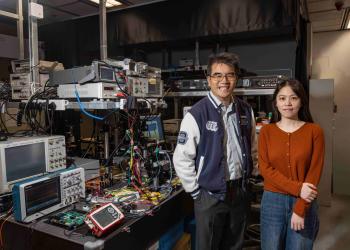Being Green, Gaining Gold
Student halls VIII and IX include green rooftops to reduce heat, solar panels, and eco-friendly furnishings and fittings.
Sustainability on campus has received a boost with both of the University’s most recent undergraduate student hostels achieving Building Environmental Assessment Method (BEAM) Eco Building Gold Awards.
Eco-friendly commitment
Green features in Residential Halls VIII and IX include energy-efficient lifts and air-conditioning units, sensor-controlled corridor and staircase lighting, water-saving devices, green rooftops covered with a variety of plants to reduce incoming heat, and solar panels. To optimize a building’s eco-friendliness requires commitment at the outset in order for architects and builders to incorporate such requirements into the design, materials, methods of construction, and fitting out, according to Mr Davis Bookhart, Senior Sustainability Manager of HKUST’s Health, Safety and Environment Office.Indoor air quality, such as how well the air is filtered and how pollutants are kept out, was given particular attention, he said. “Every piece of furniture and material in a room has to be considered carefully. They all have to be green and low in VOC (volatile organic compounds).” In addition, HKUST adopted environmentally friendly construction measures, using recycled glass paving blocks for hard landscaped areas, Forest Stewardship Council (FSC)-certified wood with authentic certificates, and recycling construction materials. More than 50% of the construction waste was also recycled.
Drive for sustainability
The Facilities Management Office has also submitted the recently completed Lo Ka Chung Building that houses the HKUST Jockey Club Institute for Advanced Study, Lee Shau Kee Business Building and the Research and Academic Building to the BEAM Society, which assesses and certifies green buildings. In line with its drive for a green campus, HKUST has pledged to achieve the BEAM gold award for all new buildings.










